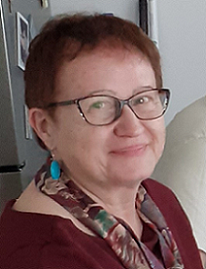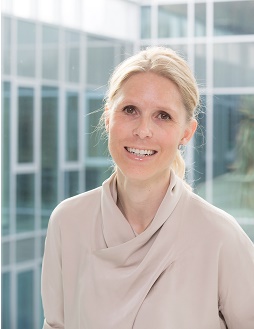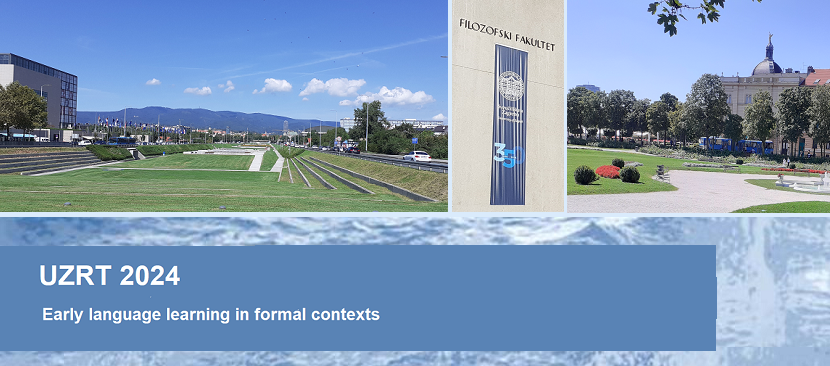Jelena Mihaljević Djigunović
 Biography:
Biography:
Jelena Mihaljević Djigunović held the post of Professor of SLA and TEFL at Zagreb University till she retired in 2014. Her main research interests have been teaching modern languages to young learners, role of individual differences in FL learning, and FL teacher education. As a founding member of the first FL doctoral programme on FL Education in Croatia, as well as a thesis adviser to 16 doctoral students, she has contributed to establishing new experts in the field. She has also served as external reviewer of doctoral dissertations at Universities in Budapest, Umea and Reading. She has been involved in six national and eight international research projects (the most recent one being Early Language Learning in Europe – ELLiE). Her publications include three research books, over 150 papers and book chapters, and she has co-(edited) several volumes for Croatian and international publishers. Besides serving as a reviewer for several national and international journals, she was editor-in-chief of Strani jezici, a leading Croatian applied linguistcs journal. Apart from presenting at numerous national and international conferences, she headed the organizing board of several conferences, including EUROSLA 15, UZRT 2010 and UZRT 2012.
web page
Presentation title:
Croatian contributions to researching early learning and teaching of FLs
Abstract
Compared to other European contexts Croatia has a rather long tradition of formal early FL learning. The FL has been part of the primary curriculum from grade 4 (or grade 5 depending on the availability of qualified FL teachers during the early days) for more than eight decades. Research of FL learning and teaching processes was initiated by Mirjana Vilke of Zagreb University, who motivated whole generations of future researchers to explore this increasingly popular area of applied linguistics.
In my talk I will analyze key developments in researching early FL learning in Croatia, which started during the 1970s (e.g., Vilke, 1976) and has continued to this day. My focus will be on research approaches in studying early FL teaching and learning processes, findings obtained, and impact they have had on national educational policies. Some attention will be devoted to research methodology aspects that have been recognized internationally as unique and innovative (e.g., Johnstone, 2009). At the end of the talk I will suggest possible future directions for researching early learning and teaching of FLs.
References
– Johnstone, R. (2009). An early start: What are the key conditions for generalized success? In J. Enever, J. Moon and U. Raman (eds) Young Learner English Language Policy and Implementation: International Perspectives (pp. 31-41). Garnet Publishing Ltd.
– Vilke, M. (1976). The Age Factor in the Acquisition of Foreign Languages, Rassegna Italiana di Linguistica Applicata, 2-3, 179-190.
___________________________________________
Marianne Nikolov
 Biography:
Biography:
Marianne Nikolov is Professor Emerita of English Applied Linguistics at the University of Pécs, Hungary. Early in her career, she taught English as a foreign language to young learners for 18 years. She has taught B.A. and M.A. TEFL, and Ph.D. courses and at present she works with doctoral students. Her research interests include: the age factor, early learning and teaching of modern languages, assessment of processes and outcomes in language education, individual differences contributing to language development, teacher education, teachers’ beliefs and practices, and language policy. Her publications include longitudinal classroom research, large-scale national assessment projects as well as case studies, and literature review papers. She has published in Annual Review of Applied Linguistics, Language Teaching Research, Language Learning, Language Teaching, System, and with Multilingual Matters, Mouton de Gruyter, Peter Lang, and Springer. Her most recent publication is Nikolov, M., & Mihaljević Djigunović, J. (2023). Studies on pre-primary learners of foreign languages, their teachers, and parents: A critical overview of publications between 2000 and 2022. Language Teaching, 56(4), 451-477.
doi:10.1017/S0261444823000095
For her full CV see her website:
https://btk.pte.hu/en/ies/department-of-englis-applied-linguistics
Presentation title:
Slow as a snail: Findings on pre-primary learners of foreign languages, their teachers, and parents
Abstract
The talk offers a critical overview of research into teaching and learning a foreign language (FL; L2) in pre-primary schools by drawing on a recent publication by Nikolov and Mihaljević Djigunović (2023). We analyzed 74 empirical studies published over two decades to characterize the state of the art and to outline where more studies are needed. The main findings overlap with what used to be, and in some contexts still is, typical in early lower-primary FL programs: parents’ enthusiasm underlies the growing popularity of pre-primary FL learning initiatives. However, not all teachers are motivated and well prepared for the challenging job, and expectations are sometimes not tuned to the children’s and their teachers’ abilities. Stakeholders’ hope reflected in the proverb slow and steady wins the race is valid only if certain conditions are met: (1) Age-appropriate FL curricula and materials are aligned with all aims of pre-primary curricula; (2) Teachers are competent both in early childhood education and FL teaching methodology, and proficient in the children’s first language(s) and the target language; (3) Classrooms are equipped with toys and picturebooks in rooms familiar to children allowing FL activities to be integrated into the timetable; (4) All stakeholders cooperate to support children’s wellbeing and learning; and (5) Transfer and continuity are ensured in primary programs integrating what children already know and can do. Findings show that most research focused narrowly on children learning words, the target language is limited to English, the authors are positively biased enthusiasts, even longitudinal studies cover short periods, and children’s and teachers’ emic perspectives are rarely included. The aims of pre-primary programs tend to be vaguely defined, and studies tend to tap only into L2 outcomes. Truly longitudinal studies are necessary on children’s overall development to explore benefits and conditions of pre-school programs.
Reference
– Nikolov, M., & Mihaljević Djigunović, J. (2023). Studies on pre-primary learners of foreign languages, their teachers, and parents: A critical overview of publications between 2000 and 2022. Language Teaching, 56(4), 451-477. doi:10.1017/S0261444823000095
__________________________________________
Simone E. Pfenninger
 Biography:
Biography:
Simone E. Pfenninger is Professor of English Linguistics at the University of Zurich. Her principal research areas are (variationist) second language acquisition, psycholinguistics and multilingualism, especially in regard to quantitative approaches and statistical methods and techniques for language application in education. Recent books include SLA and Lifelong Learning (2023, co-authored, Routledge), The Changing English Language: Psycholinguistic Perspectives (2017, co-edited, CUP), and Beyond Age Effects in Instructional L2 Learning: Revisiting the Age Factor (2021, co-edited, Multilingual Matters). She is co-editor of the SLA book series for Multilingual Matters, President of the International Association of Multilingualism (IAM), and Vice President of the European Second Language Association (EuroSLA).
web page
Presentation title:
Emergent bilingual children in early foreign language learning: Focus on variability and dynamicity in L2 development data
Abstract
Second Language Acquisition research has identified three recent trends that are particularly pervasive in language education of young learners. First, very young foreign language (FL) learners have become a new population of learners, which opens challenging questions regarding not just expectable outcomes but also the very nature and aims of FL learning at this age (Muńoz 2019). Second, as a “major educational initiative” (Heras and Lasagabaster 2015: 72) in Europe, content and language integrated learning (CLIL) has been taking root in recent decades, with the promise that early bilingual instruction will result in higher levels of FL proficiency, while simultaneously equipping students with other key skills such as intercultural awareness (e.g. Wode 2004). Third, today’s multilingual and technology-supported culture is redefining when, why, and how languages – in particular English as a foreign language (EFL) – are learned and used (Douglas Fir Group 2016; Larsen-Freeman 2017). Each of these three topics has received a lot of attention in its own right in SLA, albeit not in interaction with the others.
Drawing on my own research on the long-term EFL development of children attending bilingual and regular (pre)primary FL programs for up to 8 school years in Switzerland, I offer a critical review of empirical and theoretical results concerning understanding of CLIL, age and the extracurricular use of digital technologies in the context of European school education. My main goals are (1) to discuss ways to implement dynamically oriented methodology that can provide much needed insights into the inherent dynamic, emergent, and contextually and socially embedded nature of L2 learning in young children, and (2) to outline implications for multilingual education when decisions are made about early teaching of different languages and early instruction through different languages in the FL classroom.
References
– Douglas Fir Group. 2016. A transdisciplinary framework for SLA in a multilingual world. Modern Language Journal 100(s1). 19–47.
– Heras, A. & D. Lasagabaster. 2015. The impact of CLIL on affective factors and vocabulary learning. Language Teaching and Research 19(1). 70–88.
– Larsen-Freeman, D. 2017. Complexity theory: The lessons continue. In Lourdes Ortega & ZhaoHong H. (eds.), Complexity theory and language development: In celebration of Diane Larsen-Freeman, 11–50. Amsterdam: John Benjamins.
– Muńoz, C. 2019. A new look at age: young and old L2 learners. In John W. Schwieter & Alessandro Benati (eds.), The Cambridge handbook of language learning, 430–450. Cambridge: CUP.
– Wode, Henning. 2004. Frühes Fremdsprachenlernen. Englisch ab Kita und Grundschule: Warum? Wie? Was bringt es? Kiel: Verein für frühe Mehrsprachigkeit an Kindertageseinrichtungen und Schulen FMKS e.V.
